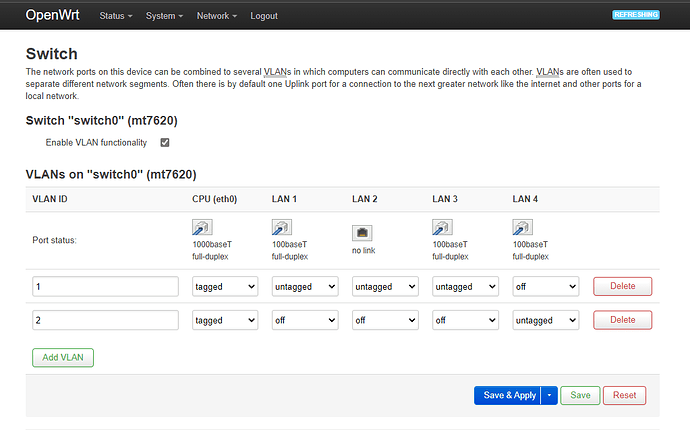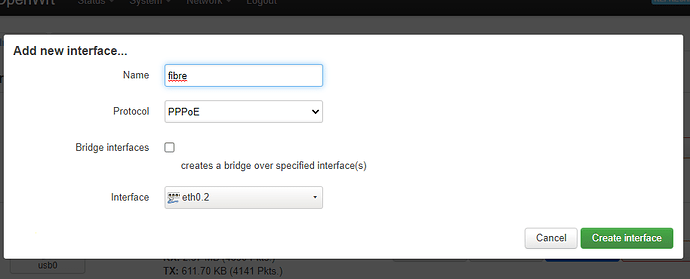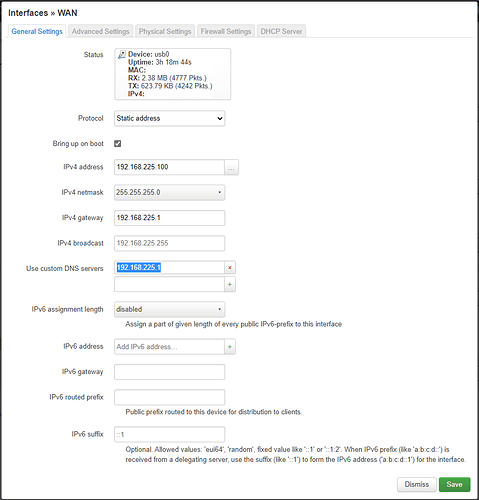Steps to use Ethernet Wan on TP Link MR200
This is more involved than the above procedure but not that hard. On a fresh installation :
1.) Open the Luci Web interface at 192.168.1.1. By default the password is not set for the root user. ( you should do it later)
2.) Go the network > Switch. By default there is one VLAN created with all four ports untagged. We need to Add VLAN to isolate it as WAN. Its Vlan id will be 2 with port 4 selected as untagged. (Port 4 is marked a WAN/LAN port by manufacturer). Additionally it should be removed from Vlan1 (which was already present) by setting it off in that entry. The CPU should be tagged. At the end of this step your switches should look like this:
Hit save to commit changes.
3.) Head to Network > Interfaces. On a fresh installation, here you will find three interfaces. One for the lan bridge (br-lan), one for the modem's WAN DHCP client and lastly one for the WAN's DHCPv6 client. Leave this unchanged for now , instead click Add new Interface
4.) Enter a name for the interface. Set any protocol you wish to handle. I am setting it as PPPoE because I am connecting the ethernet cable from an upstream device of my ISP's PPPoE service. If you are receiving the cable from another router or modem that is already connected to an Internet service you might want to select the protocol as DHCP or Static based on how the upstream device is configured.
5.) Configure your protocol in the general Settings and advanced Settings tabs. This will be specific to your ISP/ use case.
6.) In the physical settings tab select eth0.2 as the interface. This was created from the VLAN switch we added earlier.
7.) In the Firewall Settings tab, add this interface to the WAN zone so that it looks like the below image. This is important to apply the correct preconfigured settings to this interface.
8.) Edit the predefined WAN interface configured on usb0. Set this to static address protocol. Set IPv4 Address to 192.168.225.100, Subnet mask to 255.255.255.0, IPV4 gateway to 192.168.225.1 and custom DNS servers to 192.168.225.1.
192.168.225.100 IP is basically a DMZ for the LTE modem that loops it out from the network, allowing our configured wan interface to forward onto the LAN. In the end the General Settings Tab should look like this:
If you don't do this step, lan-wan forwards wont work even if your router is successfully connected to upstream device.
9.) Leave the WAN6 unchanged. Click Save and Apply to commit changes
This should be enough access internet on LAN clients. No more settings changes should be needed.




